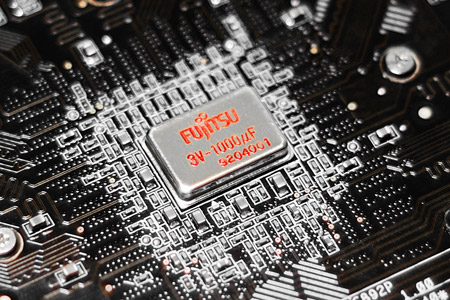Asus Does Super ML Caps for Overclocking
Asus released two graphics cards that utilize Super ML Caps for higher GPU overclocking and 15°C cooler GPU temperatures.
This morning, Asus said that two new graphics cards, the ENGTX285 (Nvidia GeForce GTZ285) and the EAH4890 (ATI Radeon HD 4890), will be equipped with Super ML Caps, making them the industry first to utilize these polymer-based capacitors. This means that users are able to crank up the ENGTX285 Series GPU 3.3 times the normal overclocking margins while remaining up to 15°C cooler than reference GTX285 GPU offerings. Additionally, the EAH4890--also featuring Asus' Voltage Tweak Technology and a special fansink--doesn't see the same performance boost as the Nvidia-based card, only offering 3 times the GPU overclocking margins and 10°C cooler GPU temperatures than other HD 4890 cards.
Super ML Caps, a shorter term for Multilayer Polymer Capacitors, offer many advantages over ceramic capacitors. Super ML Caps remain stable under regular and AC voltage, doesn't have an aging mechanism, and is resilient under thermal shock. Made up of plastic with a good thermal coefficient of expansion (meaning they won't expand like ceramic capacitors), these capacitors are not only low in cost, but offer an extremely low equivalent series resistance due to the source material. Ceramic capacitors, on the other hand, tend to crack easily, are sensitive to piezoelectric voltage, and uses precious metal electrodes that have a higher electrical resistance.
With the use of these Super ML Caps, consumers can actually push the card harder because they are more likely to overheat less than cards using standard ceramic capacitors, thus remaining extremely stable. The cards should last longer because the Super ML Caps expand and contract less; the ESR also enable higher ripple current with better power efficiency to help lower the temperature of the GPU and memory modules (up to 15°C and 8°C respectively on ENGTX285). The low height of the Super ML Caps enable them to be closer to the GPU without interfering with the heatsink, allowing faster responses with a reduced lower voltage noise. Additionally, with the inclusion of the EMI Shield, covered chokes, and low RDS(on) MOSFETs, users can achieve extreme performances while "enjoying total peace of mind."
"With the Super ML Cap present on the ENGTX285 Series, the overclocking limits of the GPU/shader/memory clock can be dramatically boosted from 670/1550/2700 MHz up to 720/1656/2920 MHz--an astonishing 3.3 times in terms of GPU overclocking margin," the company said. These numbers are already increased from the default core numbers, boosted from 648MHz up to 670 MHz, 1476 MHz to 1550 MHz, and 2484 MHz to 2600 MHz respectively, a 108-percent increase before overclocking.
On the EAH4890 series, users can manipulate the card's voltage using the built-in Voltage Tweak technology. Users can actually boost GPU voltages from 1.321V up to 1.4V with just "a few clicks" in the SmartDoctor application. According to the company, the card's overclocking limits of the GPU/memory clock can be dramatically boosted from 900/4000 MHz up to 1000/4800 MHz. It also features a special fansink that offers six 230 mm heatpipes; this, along with the low ESR of the Super ML Caps, keeps it 10°C cooler than reference HD 4890 boards. As with the ENGTX285, the default core is increased 108-percent before overclocking, its default core and memory clock performances elevated from 850MHz up to 900MHz and 3900MHz to 4000 MHz.
To learn more about each card's individual specifications, head over to the official Asus website for a larger specification sheet.
Get Tom's Hardware's best news and in-depth reviews, straight to your inbox.

Kevin Parrish has over a decade of experience as a writer, editor, and product tester. His work focused on computer hardware, networking equipment, smartphones, tablets, gaming consoles, and other internet-connected devices. His work has appeared in Tom's Hardware, Tom's Guide, Maximum PC, Digital Trends, Android Authority, How-To Geek, Lifewire, and others.
-
jeraldjunkmail Always nice to have more tweaking headspace... These sound like a worthwhile upgrade to thet board designs. In another couple of years when my SLI system no longer cuts it, I bet these will be industry standard...Reply -
because "they are more likely to overheat less"... how about just, "less likely to overheat". Must get paid by the word.Reply
-
mavroxur wizard515because "they are more likely to overheat less"... how about just, "less likely to overheat". Must get paid by the word.Reply
Look out everyone, Captain Grammar has entered the room -
WINTERLORD shoot im poor they need to release somthin like this for like the 9800GTX + but class of the future replacement of the 9800Reply -
touchdowntexas13 I'm not sure they would be worth the price premium i bet Asus is going to be putting on them, but they will eventually be industry standard like jeraldjunk said. Then everyone can afford them.Reply -
evilshuriken "...these capacitors are not only low in cost, but offer an extremely low equivalent series resistance due to the source material."Reply
If that is true, then they should become standard soon enough. -
touchdowntexas13 maybe they don't cost very much to make, but maybe the development was costly. you can bet that there will be some sort of premium, at least for a while.Reply -
anamaniac Did I cream my pants? Nope, almost.Reply
Aren't people already reaching 1000GHz on the 4890? What can these babes be overclocked to without budget and sensibility in mind?
What disadvantages do these polymer caps have?
Can I have one?
